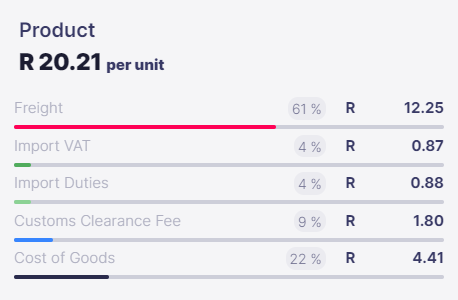
Is your eCommerce store ready for the Christmas rush? Prepare for the busiest season of the year by implementing our top five tips.
It goes without saying. The festive shopping season is the most profitable but also the busiest time of year for eCommerce merchants. And, if you’re caught unprepared, “festive” is not the f-word you’ll have in mind.
Since the Great Rise of eCommerce following the pandemic, the competition for online sales is more vicious than ever. The massive volumes of customers placing online orders have a notorious knock-on effect on bounce rates, shipping times, returns – the list goes on.
There’s nothing else for it. To keep up with the competition, you must deliver a standout shopping experience to keep customers on your site and clicking that checkout button.
How do you do that?
Well, we’re about to tell you. In fact, we’re about to share five top tips to prepare your store for the eCommerce Christmas rush. Trust us – reading our guide to eChristmas is the first step to getting everything you ever wanted on your wishlist.
What’s the first sign of Christmas in the land of commerce? The kitschy window display, of course! The fake Halloween cobwebs come down on October 31st and wham! It’s the 1st of November and the festive shopping season has officially begun.
Giant plastic Christmas trees suddenly appear in the middle of shopping centres. You keep finding strands of tinsel in your hair. Quality Street chocolates make their annual appearance in the sweets aisles, along with Michael Bublé’s tuneful crooning.
You might be thinking that your eCommerce store is lacking in a window display, and that’s where you’re wrong. Your homepage is your window display, buddy! This is your chance to deck it out with some festive Christmas designs.
More importantly, though, you’ll want to decorate your homepage with shiny baubles like product categories that help direct traffic into channels where they are more likely to check out. Think of categories like:
Most popular
Most relevant
High-margin (more bang for your buck)
High-quality products
To take it one step further, you can design product categories which offer shoppers some guidance. Personalised gift categories are an excellent way to convert prospects into purchases.
Let’s unwrap that idea together, shall we?
Handholding is a personable touch that goes a long way. Point them in the right direction by designing product categories which also act as gift-buying guides with titles like:
Gifts for her
Gifts for him
Gifts for your parents
Gifts for your coworkers
Pro tip: enhance these personalised categories with accompanying blogs which guide shoppers through the trendiest Christmas gifts to shop for their partners, friends, and bosses.
Once shoppers are channelled in the right direction, the chances that they’ll make a purchase are much, much higher. If they land on your homepage and become immediately overwhelmed with choices, you’ve lost them before they’ve even looked at what you have on offer. Up goes your bounce rate.
But offering personalising gift categories saves your customers from browsing irrelevant gifts and creates a pleasant shopping experience for them. This is a great opportunity to polish your user interface, too. Make sure that it’s easy for your shoppers to navigate your offers.
Surprise and delight your customer by revealing a new “gift” in the form of a checkout code or product on your site for a month. If that’s a bit of a stretch for your business, go for the twelve days of Christmas.
Either way, a virtual advent calendar is 1) a fabulous and festive way to structure your Christmas marketing campaign and 2) an effective way of promoting product discovery. It also adds a nice touch of gamification to your site.
Soon, you’ll have customers checking out your site every day for a new offer or a new product. Great for traffic, great for customer engagement!
The Christmas shopping season is almost as stressful for your customers as it is for you. Transparency is key to maintaining customer satisfaction and building trust relationships. For example, customers need to know the last possible date that they can place their order for it to arrive in time for Christmas.
So, build this timeline into your calendar and keep your customers in the loop with frequent updates. And, if you don’t have full oversight of your shipping timelines from China to South Africa – well, then it’s time to switch to a shipping partner who can offer you that kind of transparency.
Are you bundling your products? Why on earth not?! Product bundling is especially effective during the festive shopping rush when people are shopping last-minute for gifts that give a little extra oomph.
Strategically placing an “add to cart” button on a product description page that allows shoppers to immediately add associated products to their cart without having to visit individual PDPs is a surefire way to fill those stockings.
Let’s say that you sell kitchen appliances – if someone is checking out an air fryer (Takealot’s best-selling item this year), throw in the option to add a spatula or a whisk to the cart.
We’ve taught you everything we know about how to have a jolly good Christmas season. The only gift we haven’t unwrapped yet is the gift of hassle-free and cost-effective consolidation shipping from China to South Africa.
To unwrap that present, sign up for Airpool today and see why over 500 local businesses trust our services.
Airpool and Alibaba: A perfect match for South African importer [UPDATED 2022]
Landed cost is the sum of all expenses associated with importing your goods from China to South Africa. This includes the cost of the goods paid to your supplier, the shipping costs, clearance costs and the import taxes & duties.
It is represented on a per unit cost and helps you with:
Note: This is not what you are paying to Airpool but rather what you are paying to all the suppliers and relevant parties: Airpool, the Manufacturer of the goods and the Import Taxes (VAT & Duties)
